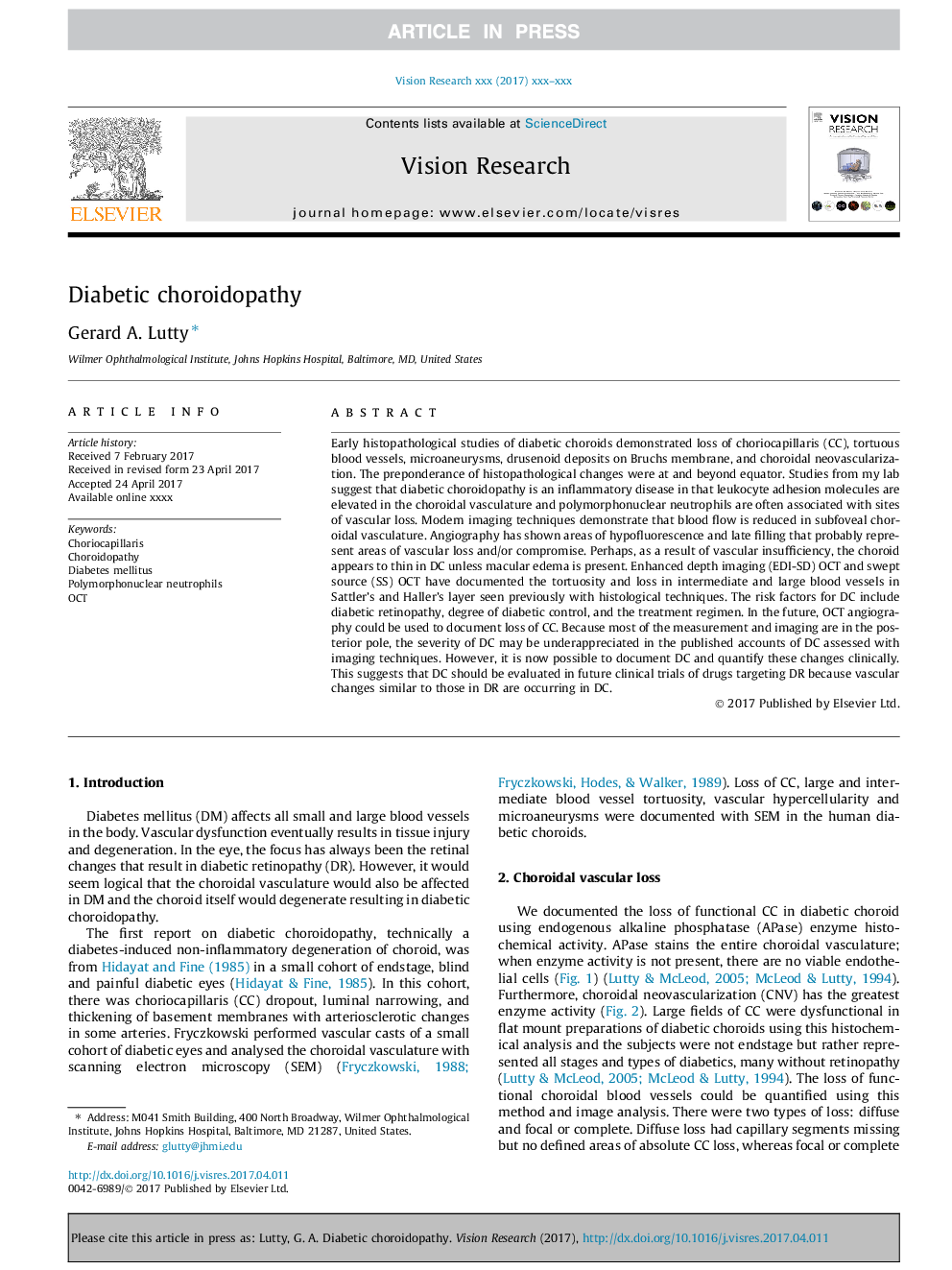| Article ID | Journal | Published Year | Pages | File Type |
|---|---|---|---|---|
| 8795392 | Vision Research | 2017 | 7 Pages |
Abstract
Early histopathological studies of diabetic choroids demonstrated loss of choriocapillaris (CC), tortuous blood vessels, microaneurysms, drusenoid deposits on Bruchs membrane, and choroidal neovascularization. The preponderance of histopathological changes were at and beyond equator. Studies from my lab suggest that diabetic choroidopathy is an inflammatory disease in that leukocyte adhesion molecules are elevated in the choroidal vasculature and polymorphonuclear neutrophils are often associated with sites of vascular loss. Modern imaging techniques demonstrate that blood flow is reduced in subfoveal choroidal vasculature. Angiography has shown areas of hypofluorescence and late filling that probably represent areas of vascular loss and/or compromise. Perhaps, as a result of vascular insufficiency, the choroid appears to thin in DC unless macular edema is present. Enhanced depth imaging (EDI-SD) OCT and swept source (SS) OCT have documented the tortuosity and loss in intermediate and large blood vessels in Sattler's and Haller's layer seen previously with histological techniques. The risk factors for DC include diabetic retinopathy, degree of diabetic control, and the treatment regimen. In the future, OCT angiography could be used to document loss of CC. Because most of the measurement and imaging are in the posterior pole, the severity of DC may be underappreciated in the published accounts of DC assessed with imaging techniques. However, it is now possible to document DC and quantify these changes clinically. This suggests that DC should be evaluated in future clinical trials of drugs targeting DR because vascular changes similar to those in DR are occurring in DC.
Related Topics
Life Sciences
Neuroscience
Sensory Systems
Authors
Gerard A. Lutty,
